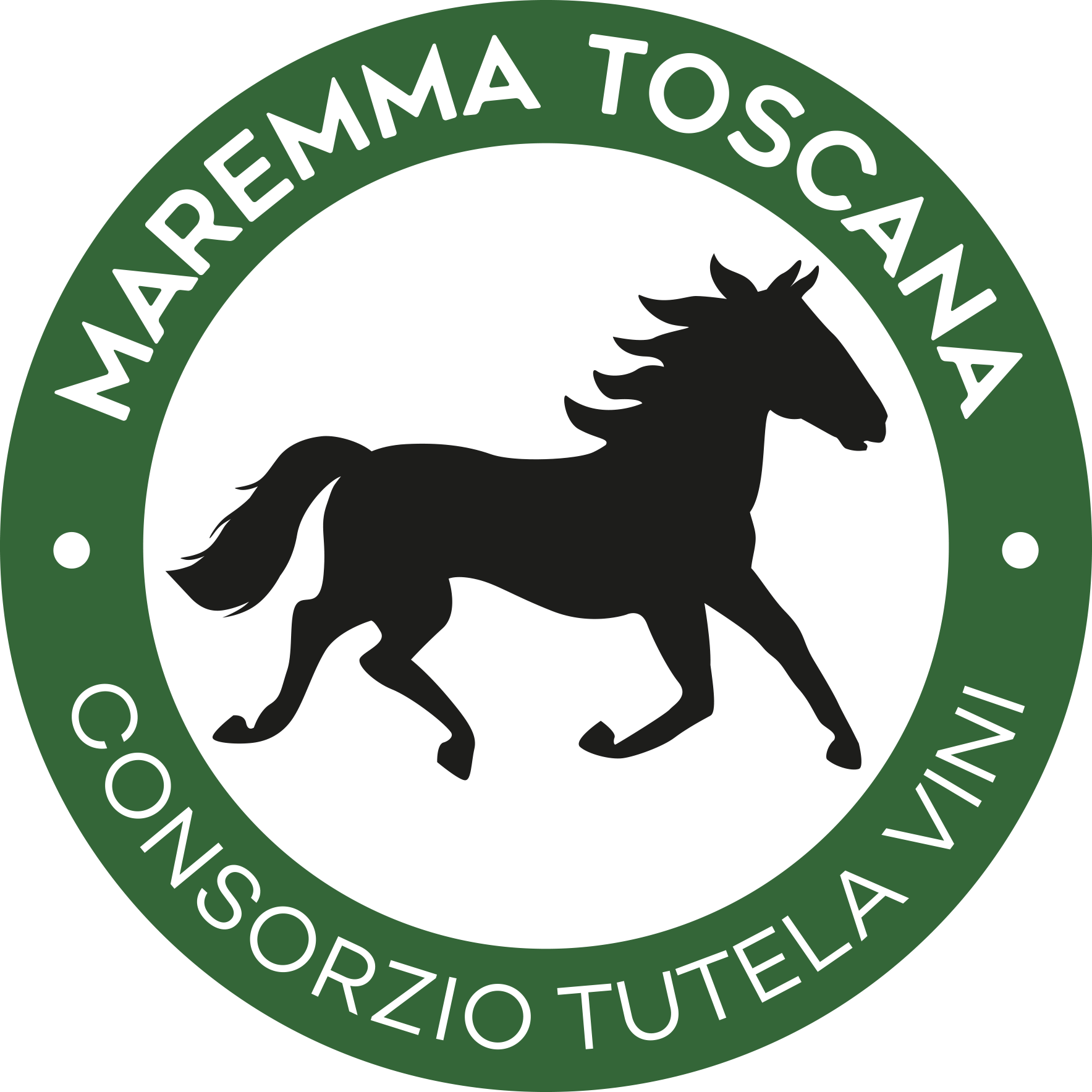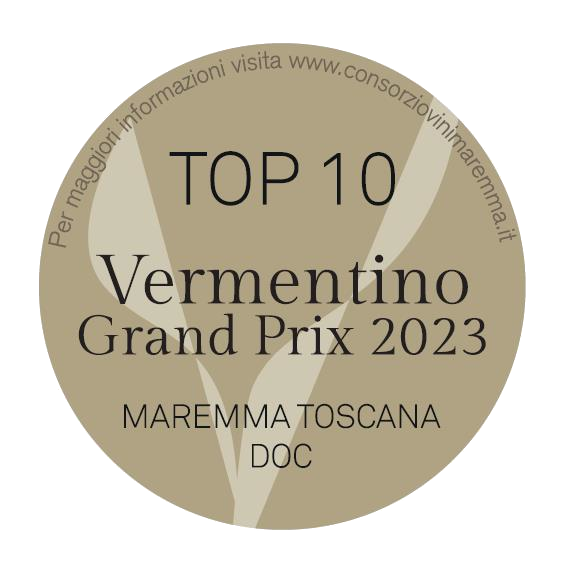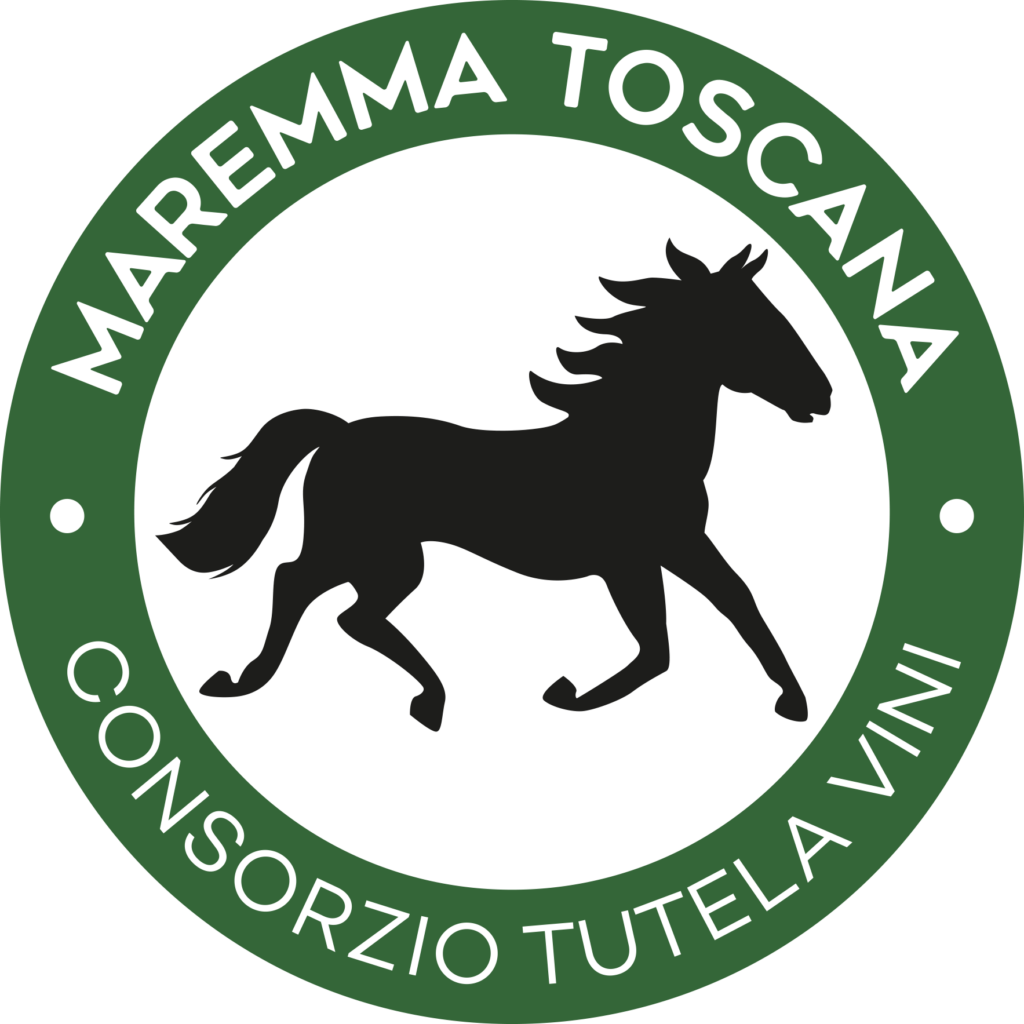Ciliegiolo
It is a traditional vine from central Italy that has one of the areas of greatest diffusion in the Grosseto Maremma: there are about 275 hectares located mainly in the municipalities of Magliano, Manciano, Grosseto, Scansano, Pitigliano and Cinigiano. Over 55% of the Ciliegiolo vineyard area of Tuscany is located in the province of Grosseto.
It is also known by the synonyms Morettone, Ciliegino, Ciliegiolo di Spagna, Aglianicone.
The name of this vine is due to the characteristic cherry color of the grape, which, in a certain sense, also affects the aroma, which recalls the pleasant notes of this fruit. Its origins, however, are still uncertain. Many believe that it was introduced in Italy by pilgrims returning from the Sanctuary of San Giacomo de Compostela, in Spain, which would also explain one of the synonyms by which this grape is known (Ciliegiolo di Spagna). In any case, the attestations of its presence in Tuscany since 1590 are certain (Soderini).
In recent years, however, hypotheses have been advanced, supported by genetic research, which indicate Ciliegiolo, together with Calabrese Montenuovo – a Calabrian variety that has practically disappeared today – as the “parent” of Sangiovese. Further research has also highlighted a possible synonymy between Ciliegiolo and another grape of southern Italy, Aglianicone, an ancient variety already known in Roman times, perhaps brought by the Greeks during the colonization of the southern regions. A recent genetic study of the viticultural germplasm (2021) carried out by eight scientific institutions and published in the international journal “Frontiers in Plant Science” has instead revealed that Sangiovese would descend from the Strinto porcino vine, one of the main progenitors of the southern vines together with the white Mantonico and the Aglianico. Ciliegiolo would still have a direct relationship with Sangiovese and with one of the descendants of “Termarina”, Moscato violetto, as well as Centesimina: both are grown on one or both sides of the Apennines in the belt between Tuscany and Emilia Romagna , as well as most of the other members of the parent groups “Termarina” and “Uva Tosca”.
It is a vine with a medium-early ripening period and a medium-high vigor, which prefers hilly soils, not too humid and fertile in areas with a temperate-warm and dry climate, where it resists drought well, but not as much wind and to spring frosts.
The wines are ruby red in color with cherry nuances, alcoholic and full-bodied, with warm and soft tones; the scent is fruity, with notes of small red fruits, sometimes with spicy hints, especially if the wine is subjected to aging.
Ciliegiolo wines go well with land appetizers, traditional tortelli alla maremma, pici, acquacotta, pappa al pomodoro, scottiglia, more or less mature cheeses, while the more mature versions are perfect with red meats, grilled and mature cheeses.
The Ciliegiolo and Maremma Toscana DOC grape variety:
Maremma Toscana DOC “Rosso” and “Rosso Riserva” (presence in the minimum limit of 60% alone or together with Sangiovese, Merlot, Syrah, Cabernet Sauvignon and Cabernet franc)
Maremma Toscana DOC “Rosato” (presence in the minimum limit of 60% alone or together with Sangiovese, Merlot, Syrah, Cabernet Sauvignon and Cabernet franc)
Maremma Toscana DOC “Rosato Spumante” or “Rosè Spumante” (presence in the minimum limit of 60% alone or together with Sangiovese, Merlot, Syrah, Cabernet Sauvignon and Cabernet franc)
Maremma Toscana DOC “Novello” (presence in the minimum limit of 60% alone or together with Sangiovese, Merlot, Syrah, Cabernet Sauvignon and Cabernet franc)
Maremma Toscana DOC “Red Government for Tuscan use” (presence in the minimum limit of 60% alone or in conjunction with Sangiovese, Merlot, Syrah, Cabernet Sauvignon and Cabernet franc)
Maremma Toscana DOC “Passito Rosso” (presence in the minimum limit of 60% alone or together with Sangiovese, Merlot, Syrah, Cabernet Sauvignon and Cabernet franc)
Maremma Toscana DOC “Ciliegiolo” (presence for at least 85%)
Maremma Toscana DOC “Ciliegiolo Rosato” (presence for at least 85%)
Maremma Toscana DOC “Ciliegiolo Passito” (presence for at least 85%)
Maremma Toscana DOC Bivarietale: Ciliegiolo associated with another black grape variety (presence between 15% and 85%)


